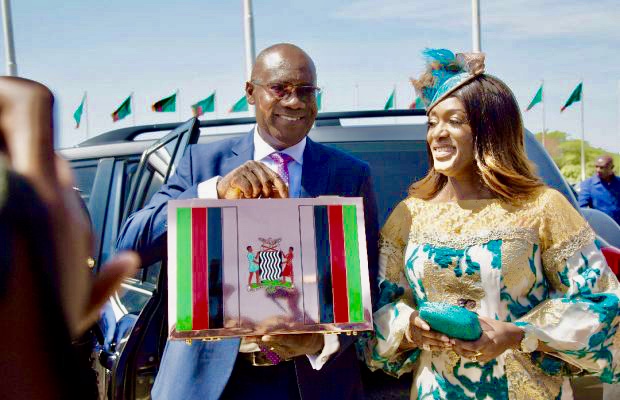LIVINGSTONE (The Business Telegraph):- Disease pandemic era has caused budget distortions both at corporate and national level. At fiscal level budgets globally have seen sharp reallocations of funds to public health at the expense of other real sectors such as agriculture, mining and manufacturing causing steeper recession forecasts. It is a fact that what was planned previous year for this year was thrown out of balance and as such most nations have had to either revise their budgets or improvise with supplementary estimates of revenues and expenditure to the end of the year.
They say planning is key to the extent that not planning is by default strategizing to fail. Zambia is Africa’s second largest copper producer whose growth historically is pegged to the red metal prices on the London Metal Exchange – LME aligned to general mining production levels. The year 2020 is said to be a write-off on the back of COVID-19 effects that have eroded growth as lock down and social distancing protocols have decreased interactions that have distorted supply chains, caused job and wage cuts thereby slowing growth sharply. The economy has seen more funds go to fighting a health problem triggering interim interventions to cushion shocks through economic stimulus packages and expansionary monetary policy by the central bank to absorb COVID related liquidity and credit risks. Zambia’s 2020 budget was sized at K106billion with estimates of attaining a 6.5% fiscal deficit and growth target of 4.2%. All this is a mirage as the unforeseen black-swan event COVID-19 distorted everything. Coming at a time when the Southern African nation grappled with challenges such as energy deficits, balance sheet vulnerabilities and higher fuel prices, disease pandemic effects have widened debt to gross domestic product ratios through weakening currency and higher debt service in local currency terms. Zambia’s debt stock rests at $11.7billion with about 60% of that in project finance with China while $3billion is dollar bonds maturing 2022,2024 and 2027. Debt service has been the key driver of dollar demand let alone the biggest gobbler of the nations resources as it works around the clock to mitigate any potential default risks.
SHORTER BUDGET CYCLES FOR THE FUTURE BUT WITH ADVANCED DATA RESERVOIRS
Zambia will have it’s 2021 budget announced on the 25 September as the MinFin gears up to give fiscal direction for next year. This estimate of revenues and expenditure is a key piece that analysts, bond holders, corporates and multilaterals look forward to. Next year is an election year for the copper producer and the budget will provide direction as to resource allocation, funding clarity as to whether this will be external or domestic and the size of budget too. Much of what the market posture is in this period is related to the announcement.
A confluence if factors ranging from the exchange rate to commodity price forecasts to aggregate demand to contingent factors both endogenous and exogenous are becoming critical in determining what the size of the budget should be. There is need to adopt stress testing factors of economic variables to attain realistic targets. Going forward it will not be adequate to just get budget proposals from stakeholders and the districts but focus should be on how agile and quick estimates can be revised and robust data reservoirs. It’s time to make investments in real tool sets that will help the process a reality.
LONGER CYCLES MORE RISKY IN EXTRAORDINARY UNCERTAINTY
With that said, longer cycles are now more risky and extraordinarily uncertain due to the unpredictability of events that could spontaneously occur. It is imperative for budget cycles to either be flexible or shorter with constant revised estimates to accommodate risk events as the one experienced in 2020. However considering the tedious nature of national planning, it is vital that the authorities invest in data mining tools that will inform national strategy better. In this generation there can be no effective strategic implementation in the absence of data. Data is indeed the new oil. These investments should go beyond technology investments such as e-mail and internet usage but should focus on the tools that will reveal trends, correlations and comparisons with peers. Zambia’s SMART initiative requires a rethink and realistic alignments to Vision 2030 because the world is morphing faster than anyone had anticipated.
RESOURCES STILL SCARCE BUT DATA COULD IMPROVE ALLOCATION
One would argue that constant budget revision is impeded by scarcity of resources. Any budgeting process will leverage off constrained optimization which the Lagrangian multiplier theory applied in parallel with the Production Possibility Frontier – PPF reveals. Much as economic theory traditionally guides on resource allocation mathematically, data mining brings a different information view as it points to the needy areas of the economy requiring resources and as such will yield the desired optimization. COVID-19 also reveals the evolution in skill set requirements especially for planners from pure economics and accountancy to data science. So wether activity based, flexible, zero-based or value proposition budget types data will be key enabler to actualizing a more effective planning process. Data science allows for granularity depth to reveal all intricate aspects that analysts can then bring out for senior planners to make strategic decisions.
The Kwacha Arbitrageur

